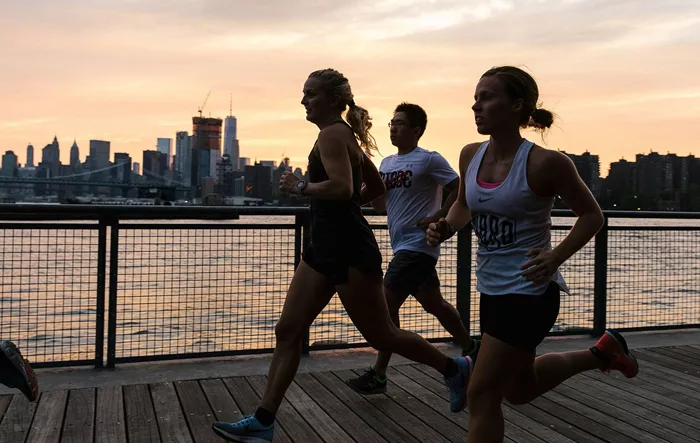Running may be an intense workout, but for athletes in one major U.S. city, the challenge extends beyond physical exertion to a growing environmental threat—air pollution. This issue is creating serious health concerns for runners, manifesting in symptoms such as nausea, dizziness, and cognitive fog.
What’s the Situation?
Denver, recognized for having the worst air quality in the nation, is proving to be a significant obstacle for local runners.
“The natural ‘runner’s high’ that I—along with many other runners in Denver—chase can quickly turn into a discomforting ordeal when inhaling polluted air,” Denver resident and avid runner Josiah Hesse noted in a recent article for the publication. “Breathing in this environment leaves my lungs feeling heavy, my throat burning, and my head spinning, much like having spent an hour inhaling exhaust fumes from a large truck.”
Hesse attributes the poor air quality to a mix of factors including wildfires, industrial activities, and heavy traffic. Additionally, Denver suffers from a meteorological phenomenon called the inversion effect, where cold air close to the ground is trapped by a layer of warmer air above, preventing pollutants from dispersing. This inversion effect is also problematic for other major U.S. cities such as Los Angeles, Phoenix, Salt Lake City, and Pittsburgh.
The result of Denver’s smog accumulation is that running frequently leaves Hesse and others with symptoms such as sore throats, headaches, dizziness, and brain fog. Despite these concerns, many local runners, like Frank Anello, an ultramarathoner, are reluctant to switch to indoor running options. “I don’t think about air quality,” Anello shared. “I don’t care. Nothing’s going to stop me from running.”
Why is Air Pollution a Concern for Runners?
Research supports the concerns of runners like Hesse. Studies have shown that air pollution negatively impacts athletic performance. For example, one study found that training and competing under higher pollution levels—even those categorized as moderate—resulted in slower performance times.
Moreover, air pollution is linked to serious health issues such as lung cancer, cardiovascular disease, and various respiratory conditions, as reported by the National Institute of Environmental Health Sciences. Other research indicates that air pollution might also contribute to digestive problems and cognitive decline.
Furthermore, air pollution poses a broader threat to our climate. Many common pollutants are also greenhouse gases that exacerbate global warming. According to the U.S. Department of Energy, highway vehicles alone release approximately 1.5 billion tons of pollution annually.
How Can Runners Protect Themselves?
The American Lung Association advises reducing outdoor activities when the Air Quality Index (AQI) in your area is classified as “unhealthy” or worse. They also recommend avoiding areas with high traffic congestion. Alternatives include utilizing gym facilities or indoor running tracks.
To combat pollution and safeguard both personal health and the environment, individuals can take several steps. Voting for politicians who prioritize climate action is crucial. Additionally, reducing personal pollution contributions can be achieved by enrolling in community solar programs, using public transportation, and investing in energy-efficient heat pumps.
Related articles:
The Best Vitamins for Male Runners: Performance & Recovery
Peshawar Becomes Focal Point In Pakistan’S Battle Against Emerging Mpox Threat
Which Type Of Fitness Is Better For You: Aerobic Or Anaerobic?


